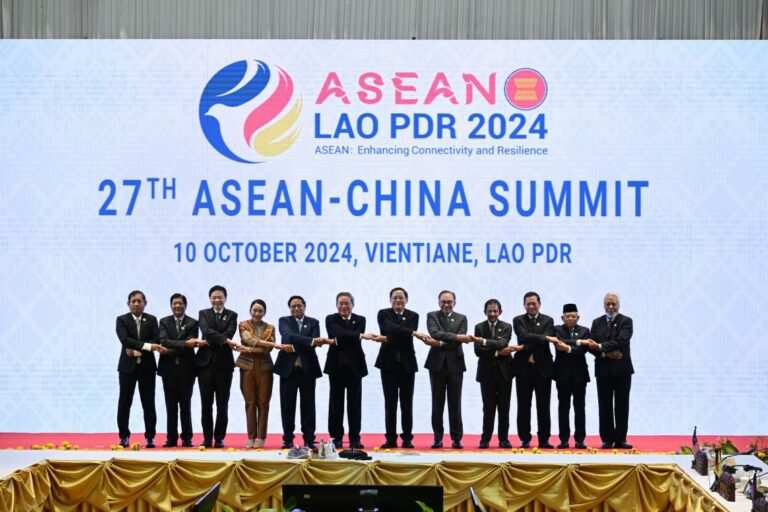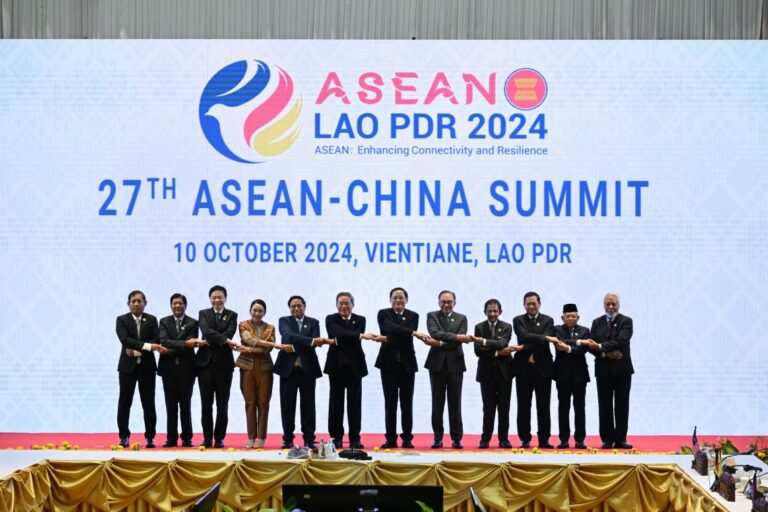
This article was originally published by Radio Free Asia and is reprinted with permission.
U.S. President Joe Biden is again skipping East Asia and U.S-ASEAN summits, both on Friday in Laos, drawing criticism from some political analysts over what they said risked being perceived in the region as a snub.
In his place, Secretary of State Antony Blinken will represent the U.S. at the two meetings to “further strengthen our critical partnerships in Southeast Asia,” according to the State Department.
“ASEAN is at the heart of our U.S. Indo-Pacific Strategy,” spokesperson Matthew Miller told a news briefing in Washington. “We are committed to ASEAN’s centrality and our partnership is critical to maintaining a free and open Indo-Pacific region.”
This is the second consecutive year that Biden has missed the summits, considered the most important meetings of decision-makers in Southeast Asia.
This year’s meetings will see top leaders from the 10-member ASEAN group, including the new prime ministers of Thailand and Singapore, attending along with heads of state from dialogue partners such as Japan, South Korea and India.
China is represented by Premier Li Qiang, who chaired a China-ASEAN summit on Thursday.
“The absence of the U.S. president in the meetings with ASEAN leaders doesn’t reflect well on the U.S. commitment to Asia, despite the fact that American leaders often stress how important the ASEAN region is to them,” said Thai political analyst and former government adviser Panitan Wattanayagorn.
“Given the upcoming presidential election in the U.S. in early November, most Asian leaders will understand the circumstances [of Biden’s absence],” Panitan told Radio Free Asia, “However, many people will continue to question the U.S. role in Asia, particularly in light of the increasingly confrontational relations with China.”
Snubbing ASEAN?
Eight years ago, when Laos as the rotational chair of ASEAN hosted an East Asia Summit, Barack Obama was present as the first U.S. president to visit Vientiane.
President Biden “cannot use the election as the excuse” to skip this year’s summit, said Piti Srisangnam, a scholar at Thailand’s Chulalongkorn University.
“That means you don’t prioritize the Indo-Pacific strategy, especially when you put ASEAN in its driver’s seat.”
The level of the U.S. representation has also been downgraded from Vice President Kamala Harris in 2023 to the secretary of state this year.
Another analyst noted that this “perceived diplomatic snub raised serious questions about Washington’s long-term commitment to ASEAN and the broader Indo-Pacific region.”
Joanne Lin from the ASEAN Studies Centre at ISEAS – Yusof Ishak Institute in Singapore wrote that it “reflects a broader, more concerning trend” that ASEAN continues to take a back seat in broader U.S. geopolitical calculations.
Lin argued that Beijing “has been proactive and consistent in its diplomatic efforts” in the region while Washington risked losing ground in Southeast Asia.
A survey by ISEAS on the views and perceptions of Southeast Asians on geopolitical developments in the region showed there has been a significant decline in confidence in the U.S. as a strategic partner and provider of regional security.
Meanwhile China was seen by more respondents in Southeast Asia as ASEAN’s most strategically significant partner.
Yet that perception varies from country to country within ASEAN, said a Vietnamese foreign affairs expert. Hanoi and Washington elevated their relationship to the highest level of comprehensive strategic partnership last year.
“I haven’t seen any change in the U.S. policy towards East Asia. All the main policies in relation to Taiwan, China, the South China Sea and the Philippines stay more or less the same,” said Nguyen Ngoc Truong, a diplomat-turned-analyst.
“No U.S. president can be expected to attend every East Asia summit!”
ASEAN’s centrality
Greg Poling from the Southeast Asia Program at the Center for Strategic and International Studies, or CSIS, in Washington pointed out that the U.S. president is expected to attend more summits and other important meetings than other world leaders so he must prioritize.
“ASEAN is still a vital grouping for regional economic integration and diplomatic discussion (albeit not solutions), but it is hard to argue that it should take priority over APEC or the Quad when it comes to the president’s schedule,” wrote Poling on the CSIS website, referring to the Asia-Pacific Economic Cooperation forum and the Quadrilateral Dialogue grouping of the U.S., Japan, Australia and India.
Poling said that in the last decade or so, the greatest value of attending the ASEAN Summit for the U.S. and most other dialogue partners has been the ability to hold sideline meetings in bilateral or “minilateral” formats.
“But even there, ASEAN is not the only or even necessarily the best option,” he argued, suggesting that in general Washington “should set vice presidential representation as the baseline at the U.S.-ASEAN and East Asia Summits.”
This suggestion may not be received well in Vientiane, where, according to regional observers, ASEAN is “back in driving mode” on several issues including the Myanmar conflict and human rights after years of friction and confrontation among key ASEAN members.
“ASEAN is slowly moving back to the center of activity in the region,” said Thailand’s Panitan. “Its actions are steady but slow as they are still based on building consensus.”
“But without real commitments from ASEAN’s key partners such as the U.S., China, Japan, India, and others, it’s difficult to see the real solutions of many important and pressing issues in the region,” he added.
American Military News Rephrased By: InfoArmed
